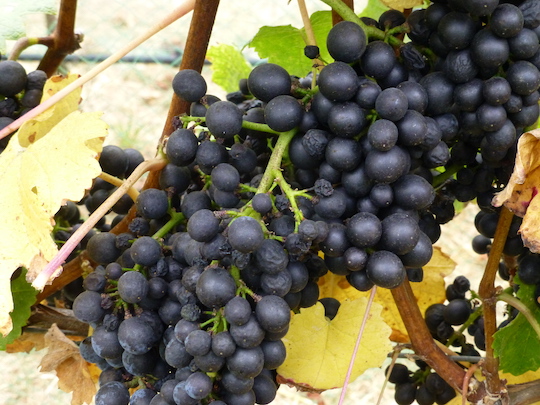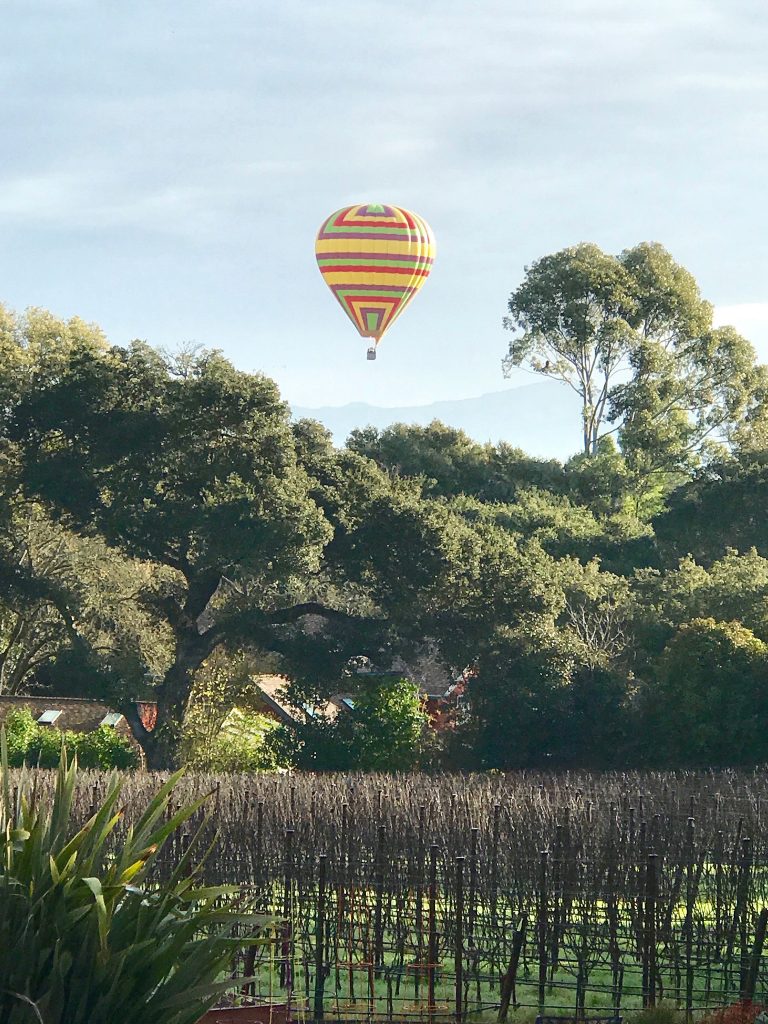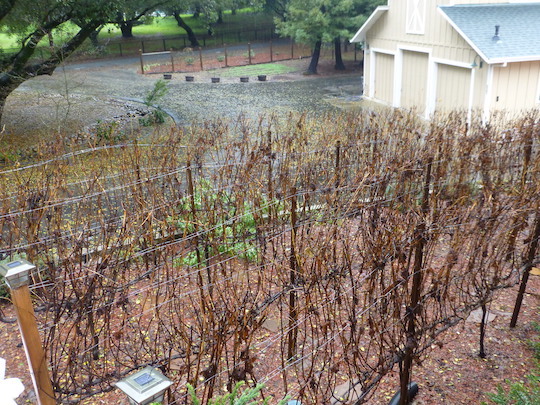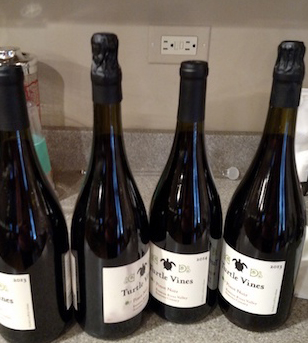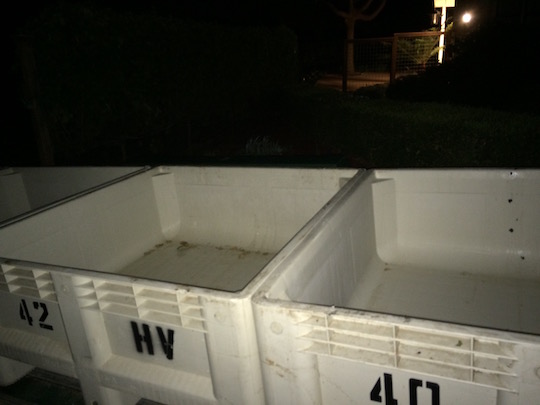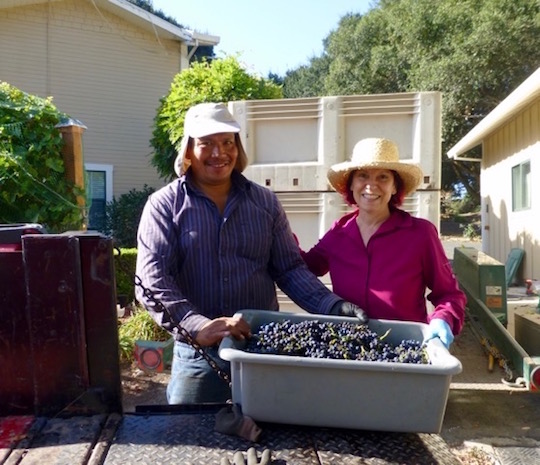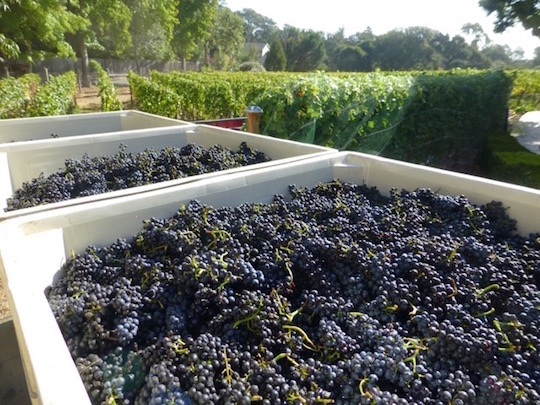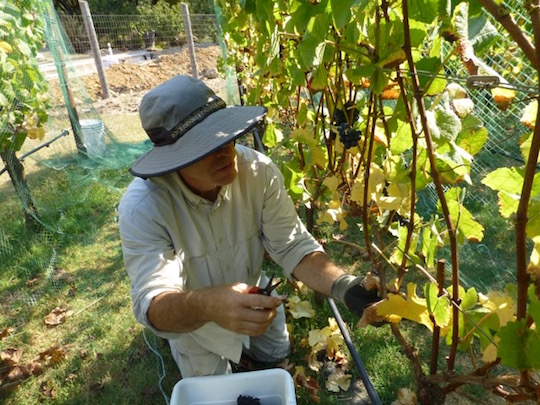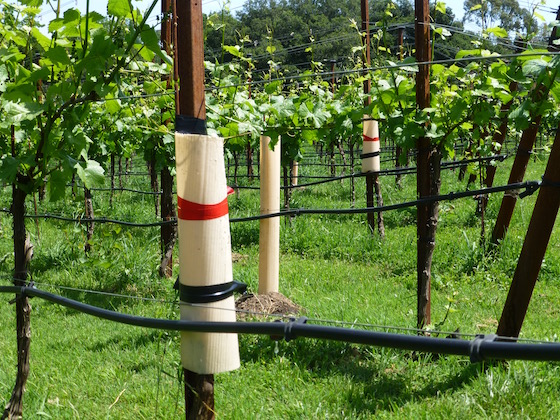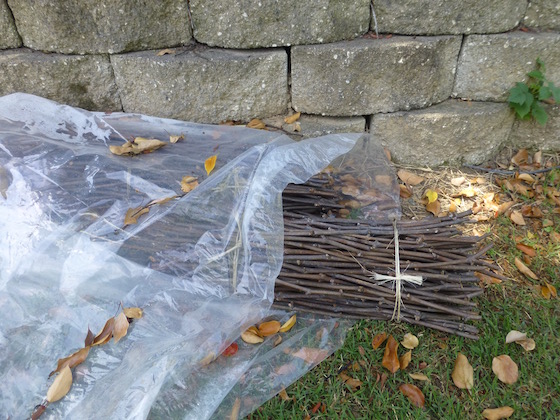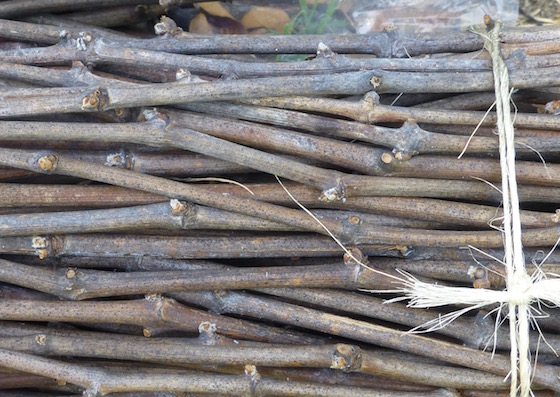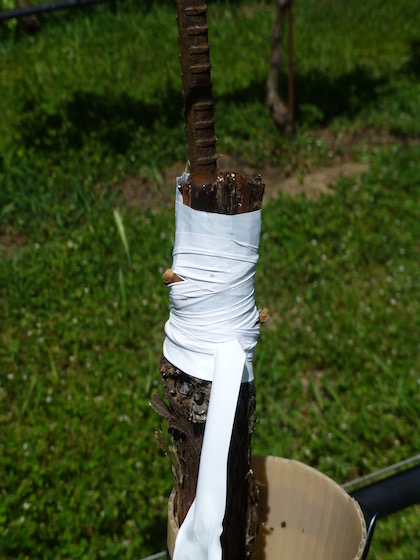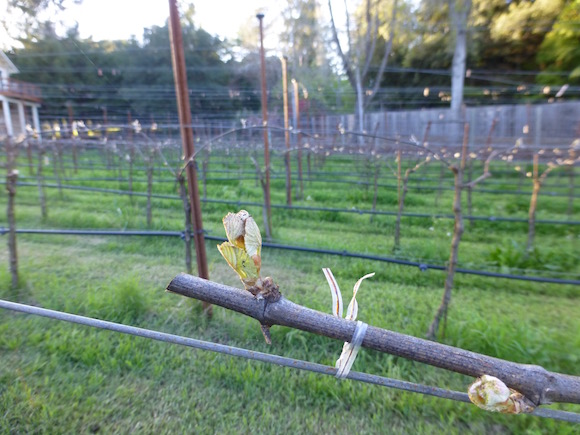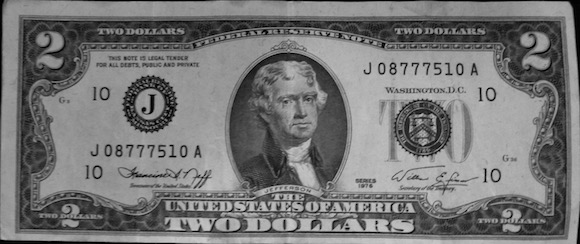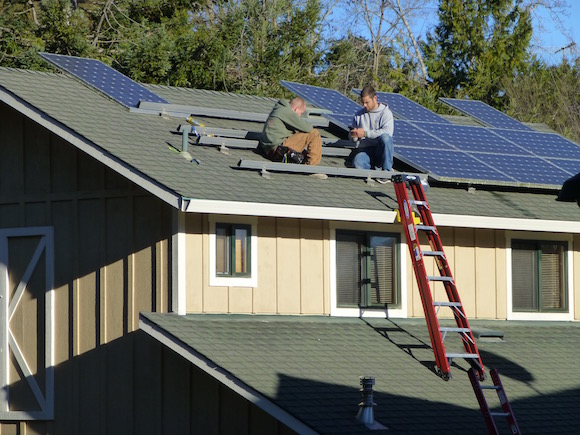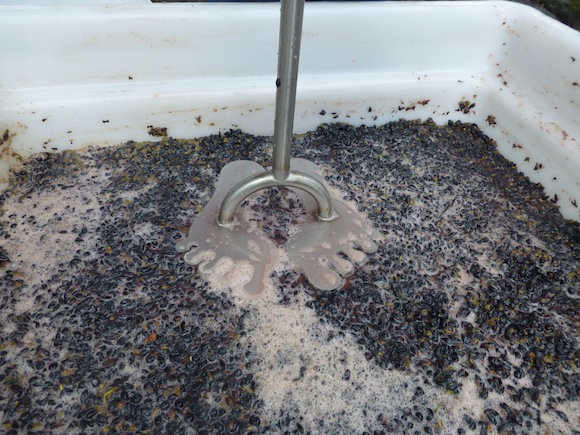
I came across this wonderful article on making Pinot Noir vs Merlot by Greg La Follette on Twitter from Palatexposure. This article is right on target as I normally order Merlot in restaurants, as I have been disappointed many time with Pinot Noir.
I have made Merlot twice and Pinot five times…Merlot is a lot easier but Pinot is worth the effort when done well!
DOES COLOR MATTER IN PINOT NOIR?
I’ve read some of the wine chat board postings which, you can guess, is a dangerous thing for a winemaker to do (read, that is), but there you have it. At any rate, it seems that one of the biggest controversies out there over the years and now in the virtual wine e-world revolves around what the intensity of color in a Pinot Noir means to the average Pinot consumer. Does color count? Does the size (of your Pinot, that is) matter?
But first, let’s dispel one myth right now before tackling another: there is no such thing as an “average” Pinot consumer, unless the term “congressional ethics” or “giant shrimp” has any meaning to you. Pinot consumers are as whacky as Pinot winemakers. Who else would spend large amounts of disposable (or otherwise) income and time chasing for that perfect bottle when there is so much nice, pleasant Merlot out there which is almost always user-friendly at purchase?
Merlot is easy to drink, and easy to make. It is, for the production cellar jock, the veritable blanc canvas on which to paint pretty pictures. Paint by numbers? Just follow the dots and fill ‘em in. A little oak here, a little cuvaison skin contact there, maybe some air with your racking. Add acid and hey, presto, you’ve got Merlot. You wanna change winemaking styles with Merlot? Need a cash cow to milk? Got Milk? Add it to your Merlot (this is called fining, folks—ain’t no joke!) and you soften the baby up for an early release. A pleasant drink, for pleasant people, without the insanity in the winery, of the hoops Pinot Noir will have us hose-hounds jumping through. Oh, sure, there is the big, grunty Merlot for those big, grunty high-end tastings. But with Merlot, the winemaker doesn’t have to go there with her/his grapes. Merlot does not challenge the cellar stamina. It almost says, “don’t worry, be happy.” A winemaker can challenge one’s self with some exceptional grapes, but again, no Merlot grape inherently calls its maker to masochism.
Pinot Noir is another story. As a crass, general rule of thumb, there is usually no such thing as a good, cheap Pinot. It’s either good, or it is not. “Nothing worse than a run-of-the-mill Pinot” is a phrase often echoing in wine bars across the country. Mark Twain once wrote about coffee in the same vein, but Pinot Noir even more so invites comment on quality. No other grape requires one to pay such attention to it. Good winemakers (another oxymoron) always ask Pinot what IT wants, and always get its consent, written or otherwise, before actually doing anything with that darned grape. Not so with obliging Merlot. Facile compared to Pinot.
So, color turns out to actually not be the question on Pinot. Each winemaker needs to make each wine what it wants to be—dark or light, big or svelte, it all depends on the area in which the grape was grown and what tools the winemaker has to address the grape. That P-noir likes to be consulted first makes Merlot no less of a grape, only a little less demanding than its Burgundy Brethren.
And with that explanation, folks, open up your hearts and your wallets and buy Merlot. Good, bad or indifferent, you will be making some poor winemaker’s life easier by increasing the demand for her/his beau Bordeaux. Which means more Merlot grapes planted and made into the liquid stuff, which means less job stress for your local oenologist. Save those big bucks for she-who-must-be-obeyed, the one they call “the heartbreak grape”, which is the passion and the true cross of most wine buffs, be they makers or consumers. Big or finessed, there is someone’s dedicated love and heart in every really good bottle of Pinot noir. And that is no oxymoron—only a bit harder to find.
